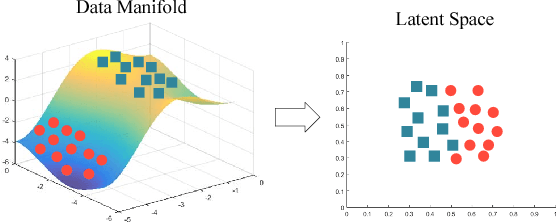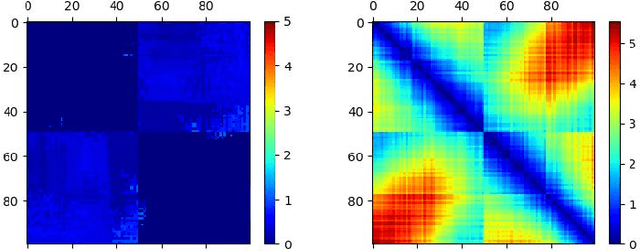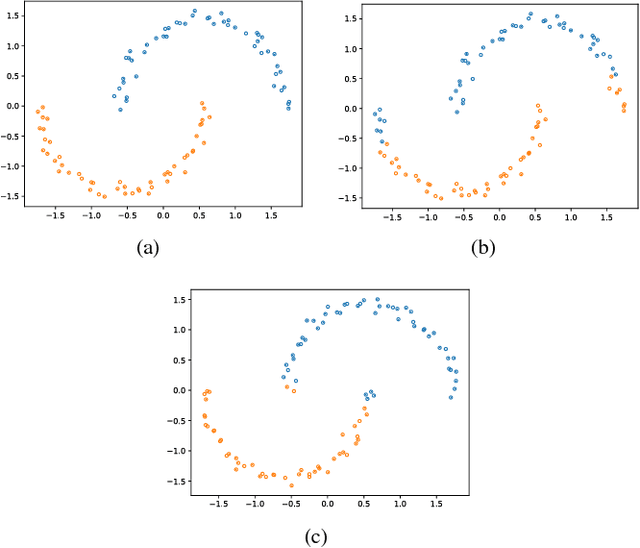Geodesic Clustering in Deep Generative Models
Paper and Code
Sep 13, 2018



Deep generative models are tremendously successful in learning low-dimensional latent representations that well-describe the data. These representations, however, tend to much distort relationships between points, i.e. pairwise distances tend to not reflect semantic similarities well. This renders unsupervised tasks, such as clustering, difficult when working with the latent representations. We demonstrate that taking the geometry of the generative model into account is sufficient to make simple clustering algorithms work well over latent representations. Leaning on the recent finding that deep generative models constitute stochastically immersed Riemannian manifolds, we propose an efficient algorithm for computing geodesics (shortest paths) and computing distances in the latent space, while taking its distortion into account. We further propose a new architecture for modeling uncertainty in variational autoencoders, which is essential for understanding the geometry of deep generative models. Experiments show that the geodesic distance is very likely to reflect the internal structure of the data.
 Add to Chrome
Add to Chrome Add to Firefox
Add to Firefox Add to Edge
Add to Edge